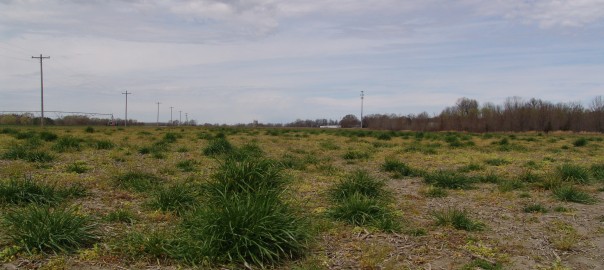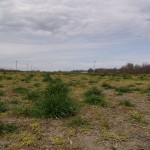Category Archives: Corn
A Shift in Early Burndown Strategy
Early Burndown. The challenge to burning down grasses before planting has become increasingly difficult in the last half dozen years. There are two reasons for the sketchy grass control with the traditional burndown application of glyphosate + dicamba. First, the continued evolution of glyphosate resistance in ryegrass, junglerice, johnsongrass and goosegrass have made that “go-to” burndown application inconsistent. Second, we have now documented that dicamba is consistently causing glyphosate to provide poor grass control. As such our recommendation has been to change the “go-to” burndown from glyphosate + dicamba to glyphosate + clethodim.
The problem with using glyphosate + clethodim is that the burndown will miss, or be weak on, some broadleaf weeds, most notably glyphosate-resistant horseweed. During the meeting circuit this winter, several have asked “Is there a herbicide that can be added to glyphosate + clethodim that will provide horseweed control while not sacrificing grass control?” This caused me to go back and examine burndown research we conducted 4 and 5 years ago with Elevore and Verdict. Continue reading
The New UTcrops.com !!!
 If you haven’t noticed, our UTcrops.com website has gotten a facelift. You may not recognize it when you first visit us at https://utcrops.com/. However, it’s organized similarly to the old version. I’m sure there are a few bugs that need to be fixed, but take a look! This site gives you ready access to essentially all UT resources related to row crop production.
If you haven’t noticed, our UTcrops.com website has gotten a facelift. You may not recognize it when you first visit us at https://utcrops.com/. However, it’s organized similarly to the old version. I’m sure there are a few bugs that need to be fixed, but take a look! This site gives you ready access to essentially all UT resources related to row crop production.
2020 County Standardized Trial Handout
A special thanks to all cooperators, agents, and all others who make the County Standardized Trials Program a success.
With Covid limiting in-person meetings and office visits, I want to make available the 2020 CST handout. The above link is available for you to use in assisting variety/hybrid selection for the coming season. Agents, feel free to print and send out or send this attachment to your row crop producers via email. The full report above contains data from 2019 and 2020 for corn and soybean, 2020 Wheat, and 2020 Cotton.
The following links are segments of the full report to simplify searches through all 2020 CST data.
Register now to attend Virtual TN Grain Conference
The Feb 4th Virtual Tennessee Grain and Soybean conference is now open for registration. Continue reading
2021 Tennessee Grain Conference going virtual
As we wrap up 2020, plans are in the works for UT Extension and UK Extension partners to host a single virtual Tennessee Grain and Soybean conference on Thursday Feb 4th, 2021. Continue reading
Corn Inservice is Virtual, Too
If you missed the Corn Inservice webinar, we’ve broken out the five presentations, which are available to view now at the UT Crops YouTube channel.
CFAP program funds available
The University of Tennessee Extension is working with our State USDA Farm Service Agency (FSA) to increase awareness of CFAP money that is available to assist crop, livestock, and dairy producers. Continue reading



